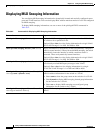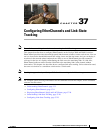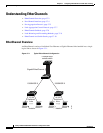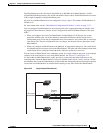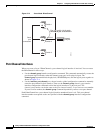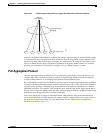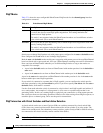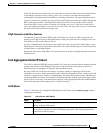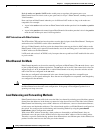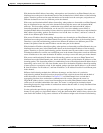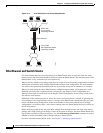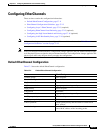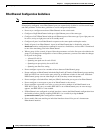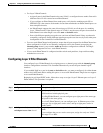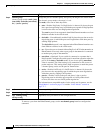
37-7
Catalyst 2960 and 2960-S Switch Software Configuration Guide
OL-8603-09
Chapter 37 Configuring EtherChannels and Link-State Tracking
Understanding EtherChannels
If the VSL between two switches fails, one switch does not know the status of the other. Both switches
could change to the active mode, causing a dual-active situation in the network with duplicate
configurations (including duplicate IP addresses and bridge identifiers). The network might go down.
To prevent a dual-active situation, the core switches send PAgP protocol data units (PDUs) through the
RSLs to the remote switches. The PAgP PDUs identify the active switch, and the remote switches
forward the PDUs to core switches so that the core switches are in sync. If the active switch fails or
resets, the standby switch takes over as the active switch. If the VSL goes down, one core switch knows
the status of the other and does not change state.
PAgP Interaction with Other Features
The Dynamic Trunking Protocol (DTP) and the Cisco Discovery Protocol (CDP) send and receive
packets over the physical ports in the EtherChannel. Trunk ports send and receive PAgP protocol data
units (PDUs) on the lowest numbered VLAN.
In Layer 2 EtherChannels, the first port in the channel that comes up provides its MAC address to the
EtherChannel. If this port is removed from the bundle, one of the remaining ports in the bundle provides
its MAC address to the EtherChannel.
PAgP sends and receives PAgP PDUs only from ports that are up and have PAgP enabled for the auto or
desirable mode.
Link Aggregation Control Protocol
The LACP is defined in IEEE 802.3ad and enables Cisco switches to manage Ethernet channels between
switches that conform to the IEEE 802.3ad protocol. LACP facilitates the automatic creation of
EtherChannels by exchanging LACP packets between Ethernet ports.
By using LACP, the switch learns the identity of partners capable of supporting LACP and the
capabilities of each port. It then dynamically groups similarly configured ports into a single logical link
(channel or aggregate port). Similarly configured ports are grouped based on hardware, administrative,
and port parameter constraints. For example, LACP groups the ports with the same speed, duplex mode,
native VLAN, VLAN range, and trunking status and type. After grouping the links into an EtherChannel,
LACP adds the group to the spanning tree as a single switch port.
LACP Modes
Table 37-2 shows the user-configurable EtherChannel LACP modes for the channel-group interface
configuration command.
Table 37-2 EtherChannel LACP Modes
Mode Description
active Places a port into an active negotiating state in which the port starts negotiations with other
ports by sending LACP packets.
passive Places a port into a passive negotiating state in which the port responds to LACP packets
that it receives, but does not start LACP packet negotiation. This setting minimizes the
transmission of LACP packets.




